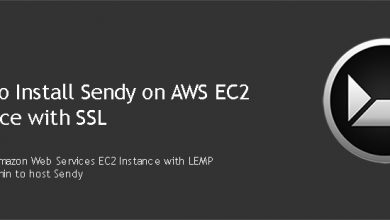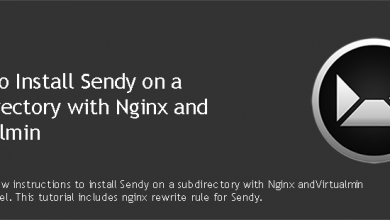Sendy is a useful tool for email marketing. It can be used to send marketing emails for a very cheap price. If you’re planning to use GCP as your hosting solution, this post will help you install Sendy on Google Compute Engine VM Instance with SSL.
GCE VM instances are basically VPS. They can be configured as high performance web servers with little extra work. I’ll walk you through configuring your GCE VM instance and installing Sendy with SSL. I’ll try to make this tutorial as newbie friendly as possible.
We’ll be building our web server with Virtualmin v7.1 GPL Nginx v1.22 PHP v8.0 MySQL v8
 Not a tech guy? Rather have a freelancer install Sendy for you?
Not a tech guy? Rather have a freelancer install Sendy for you?Hire me and have your Sendy ready within 24 hours!
Get Sendy Installed
Step #1 – Create a GCE VM instance for Sendy and install Virtualmin
This step will get your GCE VM instance ready for Sendy. We’ll create a VM instance with
Ubuntu 20.04
as operating system and install Virtualmin. Complete each and every step in below tutorial and get your VM instance configured with Virtualmin.Tutorial: Install Virtualmin on Google Cloud VM instance
Step #2 – Disable MySQL Strict Mode for Sendy on Google Cloud VM instance
MySQL 5.7 and later versions come with strict mode enabled by default. Virtualmin installation script installs
MySQL v8
on your GCE VM instance by default. And Sendy doesn’t support MySQL strict mode by default. So let’s disable it.Tutorial: Disable MySQL Strict Mode on Ubuntu
Step #3 – Add your Sendy domain to Virtualmin on Google Cloud
Your GCE VM instance is ready to host Sendy or any other website when you complete above steps. It’s now time to add your Sendy domain to Virtualmin. Virtualmin has something called Virtual Servers for this purpose. You need to create a top-level server within Virtualmin for each of your domains. Don’t forget to point your Sendy domain to GCE VM instance with an A record.
Tutorial: Add a domain to Virtualmin
Step #4 – Enable SSL (https) for Sendy on Google Cloud
Virtualmin offers an option to request a Let’s Encrypt SSL certificate for your Sendy domain. Now that you have Virtualmin installed and Sendy domain added to your GCE VM instance, it is the perfect time to enable Let’s Encrypt SSL for Sendy. Let’s Encrypt SSL certificate are issued free of charge and Virtualmin is capable of auto renewing them.
Tutorial: Install Let’s Encrypt SSL Certificate for Sendy with Virtualmin
Step #5 – Obtain Sendy MySQL database credentials from Virtualmin on Google Cloud
Virtualmin automatically creates a MySQL database for your Sendy when you add your domain with above instructions. But it won’t display login credentials on-screen. You’ll need this information to complete the Sendy installation on Google Cloud. Fortunately you can easily get MySQL credentials from Virtualmin.
Tutorial: Obtain Sendy MySQL credentials from Virtualmin
Step #6 – Install Sendy on Google Cloud with Virtualmin
You have everything setup for Sendy now. We took care of every little configuration that is required to run a perfect web server on Google Cloud. This step is to actually install Sendy on Google Compute Engine VM instance. Complete the installation with below tutorial. You can ignore the prerequisites section.
Tutorial : Install Sendy with Virtualmin
Step #7 – Redirect http to https with Virtualmin on Google Cloud
Your Sendy should be fully functional at this point. We will wrap things up by setting up 301 redirects from http to https. This step increases Sendy security a bit. This will make sure nobody can spying on your Sendy traffic.
Tutorial : 301 Redirects from http to https with Virtualmin
That’s it. If you’ve followed all the steps above, you now have a superfast Sendy installation on Google Cloud with Virtualmin control panel and LEMP stack. Head over to our sysadmin support forum to get help if you run into errors.





Thank you for this comprehensive guide!